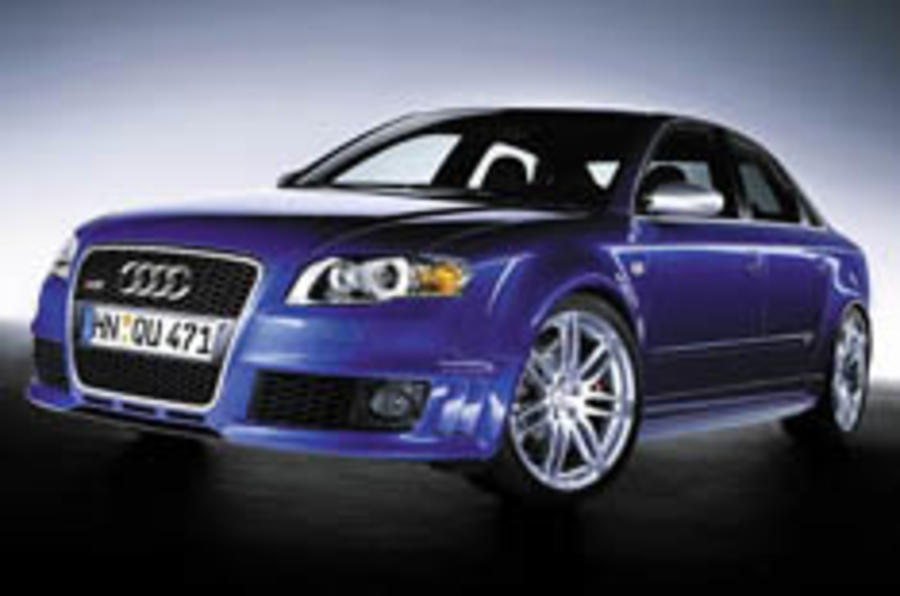The new audi RS4: a hi-tech naturally aspirated V8, lightweight body, rear-biased four-wheel-drive system, aluminium suspension and 0-62mph in under five seconds. BMW’s M3 could be in real trouble.
The 414bhp 4.2-litre RS4, which makes its debut at this week’s Geneva show, marks a new era at Audi. For the first time in almost two decades, the German car maker has forgone turbocharging in favour of a highly strung naturally aspirated engine to achieve high-end performance – a move Ingolstadt insiders say will be repeated in a series of exciting new fast Audis, including a new RS6, a storming RS8 and the eagerly anticipated production version of the stunning Le Mans concept supercar.
First of a new breed
The adoption of a naturally aspirated engine for the second-generation RS4 is, however, just one component in a much broader engineering program instigated by Audi’s increasingly active Quattro division, which is desperate to earn the respect paid to its performance rival, BMW’s M-division.
The new 155mph sporting saloon (an estate will follow) also receives a re-engineered four-wheel-drive system, which will apportion power with a 40:60 rear bias, lightweight body panels, aluminium intensive suspension and a reworked driver-focused interior.
Together, the changes are claimed to make the new four-door a much more engaging car to drive than its 380bhp twin-turbocharged 2.7-litre V6 predecessor, and a car that, on paper at least, looks more than capable of standing comparison with the standard-setting a M3.
The RS4 reaches the UK this autumn priced around £50,000.
Design & engineering
Building on the sharpened appearance of the facelifted S4 launched this month, Ingolstadt’s latest supersaloon gains an added dose of visual muscle that instantly differentiates it from its lesser sibling. A deeper front bumper with larger air ducts and distinctive vertical gills on the outer edges, a new plastic honeycomb insert for the single-frame grille and beefed-up front wings dominate the front view, while the sides are characterised by widened sills, signature matt aluminium exterior mirror housings and towering 18-inch double-spoke alloy wheels shod with 255/40 profile tyres. The rear features a small spoiler, deeper valance panel and a pair of large chrome tailpipes.
The new car sits a considerable 30mm lower than the S4 and its overall stance is improved by tracks extended by 37mm up front and 47mm at the rear.
Aerodynamic requirements have influenced changes underneath, where a flat undertray and diffuser provide a more efficient flow of air, while small ducts are employed to cool the engine and brakes more effectively.
Audi has also used its expertise in lightweight construction to keep weight down. The body is made predominantly from high-tensile steel – as with the S4 – but the bonnet and heavily flared front wings are aluminium. At 1650kg, the new car tips the scales a creditable 10kg under the S4 but is 155kg heavier than an M3.






Add your comment